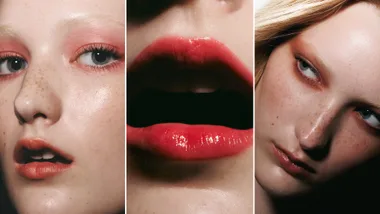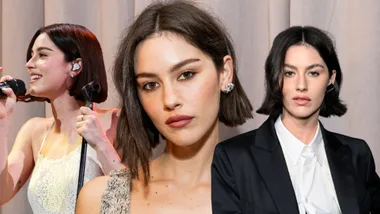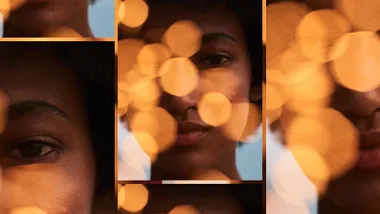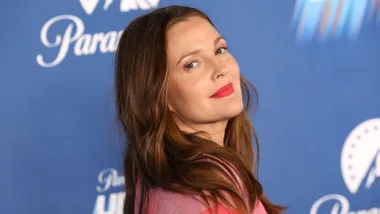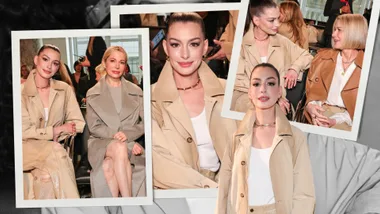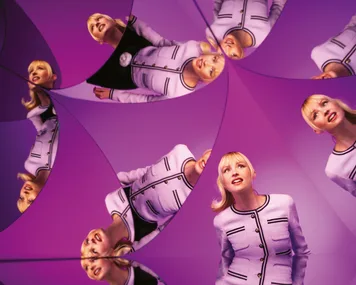If you’re a card-carrying beauty girlie, there’s a good chance you’ve seen the “morning shed routine” trend on your FYP. And no, it’s not something you’ll find at Bunnings. Instead, it involves TikTok users showcasing their nighttime routines, slipping into bed with embalmed faces sheet-mask-ed and mouths taped.
Then, they wake and shed their layers of serums, moisturisers, microneedle patches and mouth tape like a serpent and step into the world hot.
Kayla Lee Mills, a morning shedder, posts face masked, jaw slung, and silk turbanned from bed. “I turn 30 on Saturday. All of this is possible because I’ve trained myself to sleep on my back,” she immediately explains (because that is the immediate question that comes to mind when looking at her setup). She’s just removed her mouth tape, and it’s time for her to get out of bed. Kayla’s skin looks gorgeous and glowing. She’s completed her morning shed successfully.
The concept behind Morning Shed is that the uglier you go to bed, the prettier you are when you wake up. Of course, the lengthy bedtime routine is conflated with self-care; there’s something about LED’ing, microneedling, masking, and tapping yourself into oblivion that tickles a part of our brain.
While the “Morning Shed” concept is new to me, I’ve spent years of my life subscribed to it. I was an avid YouTube makeup artist follower in my late teens and early twenties. I caked on contours and cut creases with enthusiasm.
But as I neared my mid-twenties and started working in the beauty industry, I realised what was truly aspirational was not having twenty eyeshadow palettes, 47 limited edition lipsticks, and Becca’s “Champagne Pop” highlighter in my handbag at all times but having skin that didn’t need the touch of a beauty blender.
It was the era of the K-Beauty 12-step skincare routine, and I was well and truly signed up – even if the constant introduction of new serums, cleansers and exfoliations gobbled up my pay cheques and caused my hormonal cystic acne (incidentally, something that arrived along with my obsession with skincare) to flare.
Where Did Our Preoccupation With Skincare As Self-Care Come From?
During the pandemic, I, like many, ran out of things to do. My pilates studio shut down, my employer didn’t need me in the office, and I couldn’t see my friends. Time yawned open. While I started reading more, I was also seized by visions of emerging from this pandemic-imposed chrysalis extremely hot.
I wasn’t alone. Interest in glowing up during COVID became something of a north star with a population of millennials who suddenly had… not much on. You couldn’t go to the pub, and there wasn’t much risk of sleeping in your makeup, so how better to spend your time than self-optimising, starting from the outside?
Reddit threads popped up titled “Glow up while having COVID” (thread “HowToBeHot”) with advice like “try some new hair and makeup tutorials, workout and read books”.
The skincare category boomed, and L’Oreal’s Active Cosmetics division reported a growth in sales of 18.9% YOY. We, the skincare consumer, became interested in new categories (and potential problems) we’d never thought of. Interest in blue light protective skincare – that is, skincare to protect us from our screens that we were suddenly spending a lot of time with – grew by 46% between August 2019 and August 2020, according to MMI Analytics.
Vox reported that devices like GloPro, an at-home microneedling device, and NuFace, a popular microcurrent device, experienced triple-digit growth in the first year of the pandemic, with overall sales in the device category up 8 per cent despite a soft performance the previous year.
And this wasn’t just about being hot; it was part of a philosophy of self-care that suggested that the rituals of caring for our bodies in times of stress might soothe the anxieties inflicted by COVID.
But it was also, of course, about being the hottest person at the socially distanced picnic. Skincare as self-care is anchored in the idea of “pleasant touch“, the therapeutic concept that actions like hugging, holding hands, and gentle touching can soothe the nervous system.
So why shouldn’t the massaging of cleansing balms, serums and the tap tap tapping of eye creams do the same?
What Happened When I Abolished My Morning Shed
Through my late twenties and into my thirties, I firmly believed that my nightly ritual of multiple serums, sprays and oils, LED masking, and microcurrenting were working to centre me, somehow. I thought of it as a form of “productive” meditation, I was calming myself down while glowing myself up. But at a certain point post-pandemic the whir of my life accelerated while the existential stressors stayed the same (the economy, the climate, the leak in the roof of my rental).
Finding the half hour to forty-five minutes to prepare my face for sleep started to stress me out.
When I got into a relationship, I realised just how much my self-care routine was stressing me out. I started feeling anxious that I couldn’t cart my multiple devices, serums, and lotions to my new lover’s house every second day without somewhat compromising “the vibe.” I began to question the psychological benefits of my self-care rituals.
After being forced by love to trot around with only a three-step skincare routine (cleanser and sunscreen, of course, excluded), I also noticed no discernable difference in my complexion. This is something I had, of course, been anticipating it would fall apart. So I started continuing my “non-self-care” routine at home. Suddenly, my bedtime beauty ritual was complete in seconds, and I had more time to read and (struggle to) meditate.

The Impact Of Giving Up My ‘Morning Shed’
I found I thought less about my appearance. I began to realise that the comforting mantra that had accompanied the application of each serum and device: microcurrent for lifting, LED for brightening, antioxidants for lightening and on and on and on was a reminder of the things I was afraid of.
A serum for “environmental aggressors” (terrifying outside if taken out of the context of beauty copy), a reinforcement of my skin barrier to keep out “external irritants”, and ultimately, the promise of protection against the slow creep of ageing as I entered my thirties. These constant reminders were about as reassuring and relaxing as the diets I embarked on during my teens.
As Kayla Lee Mills says in her post, “I’m almost thirty.” Thirty is a dirty word in beauty. And, as one plucky commentator points out on a morning shed video, the multi-step “self-care” skincare routine is just “capitalism’s final boss.” A complicated salve to problems that have been invented for us.
I haven’t said goodbye to capitalism’s final boss because I work in beauty, love beauty, and my skin feels more comfortable and looks better when I use my favourite beauty products. You will prize my Augustinus Bader, The Rich Cream and Skinceuticals CE Ferulic Serum, from my cold and poor beauty editor’s hands.
But I’ve drastically culled my routine, and most importantly, I no longer conflate the time I spend taking care of my appearance with the time I spend taking care of my “self.” When I use skincare or put on makeup, I’m doing it to look hot.
Related Posts:
- TikTok’s ‘Save The Day’ Hack Will Calm Your Stress Levels
- Sha’Carri Richardson Is Using Beauty To Shape Her Olympic Comeback Narrative
- Could You Share Your Salary With Your Best Friend?
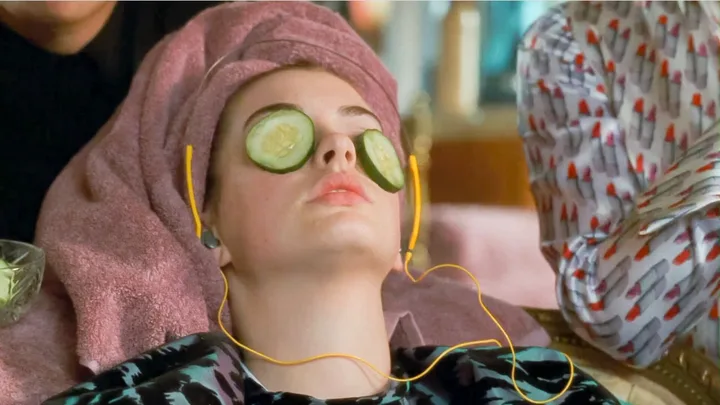 Walt Disney Pictures
Walt Disney Pictures
